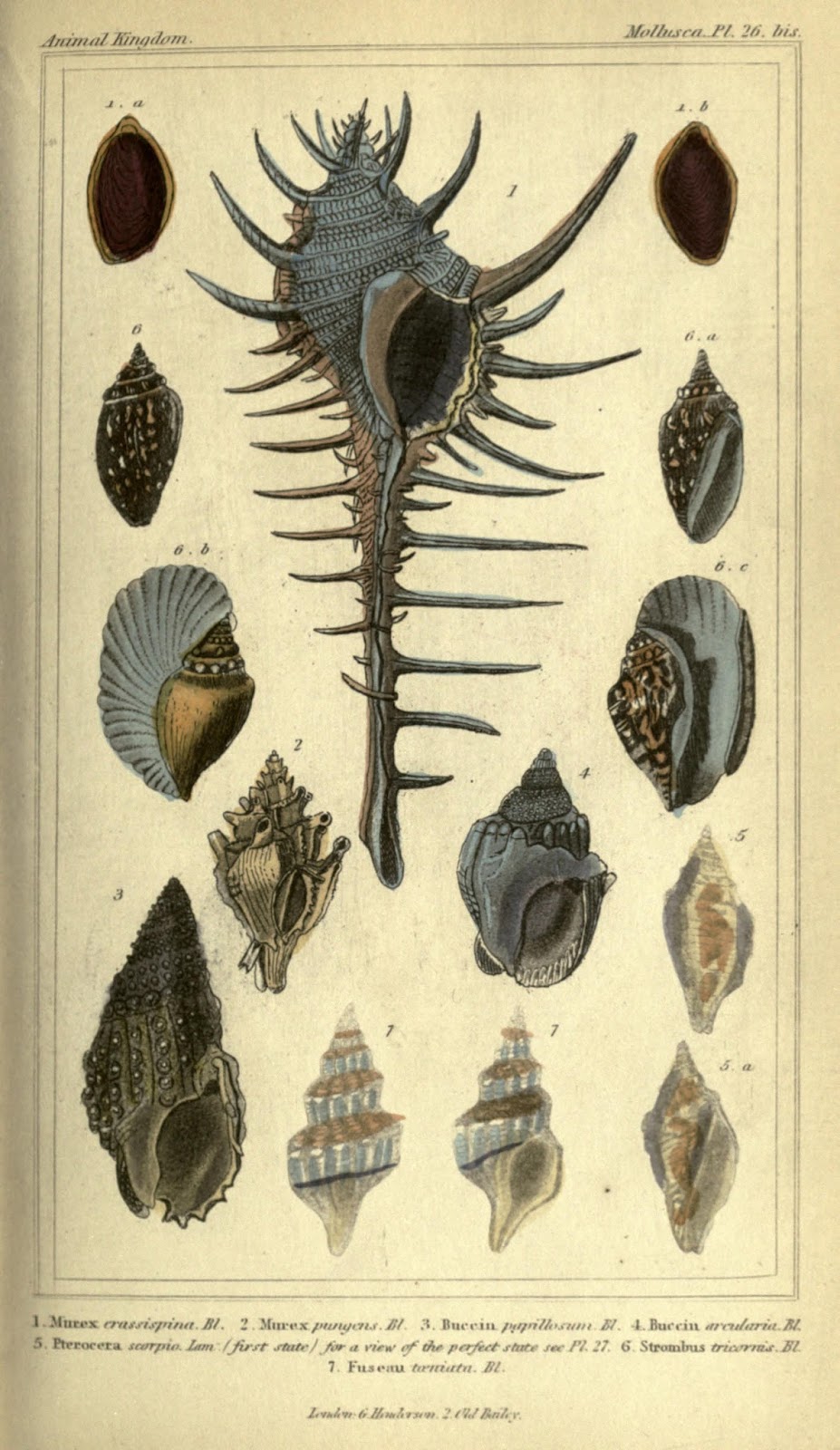Book of the Week: Cuvier and Classification
 |
| Cuvier, Georges. The animal kingdom, arranged according to its organization, serving as a foundation for the natural history of animals : and an introduction to comparative anatomy. Vol. 3, Mollusca, Annelides, Crustacea, Arachnides and Insecta. (1834). v. 3 (plates). http://www.biodiversitylibrary.org/page/2459069. Digitized by Natural History Museum Library, London. |
This week’s book of the week relates yet another milestone in the development of a classification system for life on earth. Cuvier’s The Animal Kingdom, Arranged According to its Organization, Serving as a Foundation for the Natural History of Animals, was an attempt to classify the animal kingdom on the basis of comparative anatomy, of which Cuvier’s entire classification schema was centered.
Cuvier was heavily influenced by Xavier Bichat, the “father of modern histology and pathology,” and adapted the principle expounded by this naturalist that articulated two levels of natural existence: vie animale and vie organique. The first referred to an organism’s relationship with the environment, including perception, voluntary movement, and sensibility. The second dealt with the faculties that upheld the “inner existence” of the organism, such as the respiratory system.
This distinction differed from that purported by Linnaeus, which divided life into animal, vegetable, and mineral. Instead, Cuvier followed a conviction that divided natural objects into living (plant and animal) and non-living (mineral) existences. Cuvier’s definition of life, influenced by the above mentioned distinction, was thus the ability to “resist for a certain time, the laws which govern inorganic bodies, and even to act on the environment in a way which is entirely contrary to those laws; we use the terms ‘life’ and ‘vital force’ to designate these apparent exceptions to the general laws of nature” ( Lecons d’Anatomie Comparée).
Thus, Cuvier’s classification of life hinged on an understanding of the internal relationships among constituent parts of an organism that produced life, which in turn was involved in constant conflict with the laws of chemistry and physics that attempted to break it apart. Using these principles, Cuvier established a taxonomic approach based on comparative anatomy that established correlations between the inner systems that maintained life within an organism. While this approach worked well for the formation of higher-level classification schemes, such as at the order level, it did not translate as well to lower groups where the internal system functions did not differ much from organism to organism. Nevertheless, Cuvier is remembered as an important naturalist who attempted to understand and establish a system on which to build the study of nature and life.
This week’s book of the week, The Animal Kingdom, Arranged According to its Organization, Serving as a Foundation for the Natural History of Animals : And an Introduction to Comparative Anatomy, by Georges Cuvier (1834), volume 3 (plates), was contributed by the Natural History Museum, London.





No problem! I'm sorry you've had such a long wait for new volumes. We will keep you updated when we are able to start scanning these volumes on the new camera.
Thanks heaps for the update (and sorry if I came across too tersely). I'd be grateful if you'd leave a message here whenever the Cuvier works are available in the better format. Cheers!
Unfortunately, after reviewing the content, we do not believe that we will be able to get significantly better scan quality with our current set-up. However, we have been developing software and a workflow for a new camera set-up that will allow us to produce higher-quality images and scan larger sized items. We have begun test scanning on this set-up, but we do not have a definite timeline in place for larger-scale production. Nevertheless, these volumes are candidates for early scanning on this apparatus once it is moved into production mode. We apologize for the wait on new scans for these items, but we hope that our new improvements to our system will allow us to produce exceptionally high-quality images on important and requested volumes. Thank you for your patience and continued loyalty to our project.
Well here it is a year later and I came back to this particular book and find the image quality still to be poor.
Is there any timeline on the problem(s) being addressed??
On the subject of scans, however, I have to say the Catesby scans are absolutely incredible. Beyond excellent.
Thanks for the heads up. We're looking into this, and a fix is in progress.
I love the Biodiversity library. A lot. But I have to tell you that the digitisation quality of the plates in this book is really poor. They are ALL out of focus. (this is based on having downloaded about 25 illustrations in the jp2 format)
I just thought you should know. It's a shame – I really like this book.